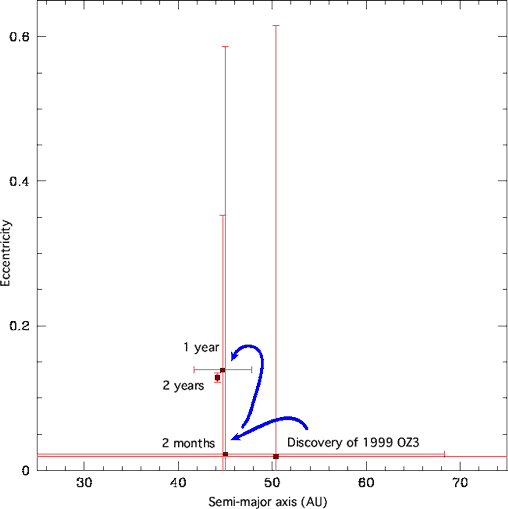Although the current inventory of discovered KBOs now exceeds 1000 objects the full potential scientific payoff from these discoveries has not been realized. A number of factors have conspired to limit the utility of the catalogue (see Kavelaars et al., 2008) 
- Low frequency tracking (less than twice per opposition) has resulted in ‘ephemeris bias’. Given the short orbital arc used to make the initial orbit guess (normally just a few hours time span between the first and last observation in the discovery image) one must make use of other assumptions (such as postulating that the discovered object is near its perihelion passage). In the common case where the assumption is incorrect, the ephemeris prediction will be substantially wrong and the KBO will be lost. Frequent and timely follow-up are required, or ephemeris bias will dominate the determination of the intrinsic orbital element distribution.
- Poor survey characterization, where the detection and tracking efficiency of each survey block is not known, will result in an incorrect interpration of survey statics. A survey’s sensitivity to a various sub-populations within the Kuiper belt is strongly dependent on the longitude and latitude of observation. Only by having well characterized detection and tracking efficiencies can a meaningful and correct statistical analysis be achieved.
To avoid these critical problems in a KBO surveys requires that newly discovered objects be identified immediately and these new identifications must be re-observed in the next few weeks. This is best, likely only, achieved when the survey discovery and tracking teams are closely integrated.
The CFEPS project has built-in follow-up/tracking of all KBOs discovered in the project; coupling the discovery and tracking programs has resulted in +80% of all characterized CFEPS detection being tracked until precise orbits could be determined.